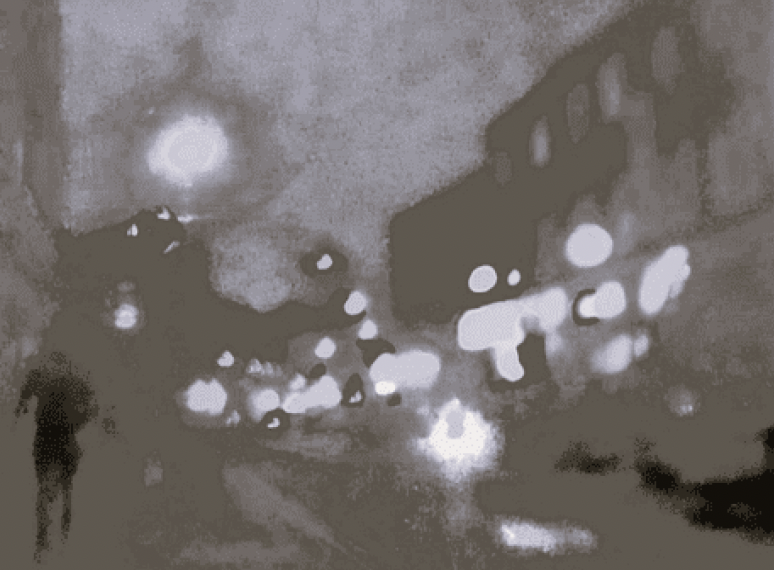In the Blueprint of Her Iris
Poems by Vikki C./Images by Robert Frede Kenter
Beauty is an uncommon word today. Even when we talk about art, we express ourselves with many other nouns. As the philosopher Arthur Danto wrote in 2002, “Beauty’s place is not in the definition…of art, from which the avant-garde has rightly removed it.” But removing beauty from the definition of art does not mean removing beauty from art itself, although it has been the fashion to do just that. Against this fashion, Vikki C. and Robert Frede Kenter have published In the Blueprint of Her Iris. This new collection is, in the eye of this beholder, a work of beauty. It feeds a hunger for the beautiful I have felt in an ugly and violent world.
The title page of In the Blueprint of Her Iris describes the book as “a collaborative poetic-visual exploration of eco-human landscapes, otherworld realism and the metaphysical.” I seized on the word “metaphysical” because I love the metaphysical poets, especially Donne in England and Juana Inés de la Cruz in México. The beauty of metaphysical poetry shines forth in its sinuous conceits, Baroque flourishes, and honest spirituality. Vikki C.’s poems share these qualities, and it pleased me to see that she and her co-creator are aware of this. The book’s title poem displays Vikki C.’s contemporary metaphysics, with a complex conceit that entwines images of sight, the dove, and the land to evoke a spiritual sorrow:
For now, the earth glows as a cigarette.
An imperfect light that subdues with
something I must not touch.
Choosing between two types of darkness—
choosing death or prolonged illness,
or how a border shifts to defer grief.
The doves bearing no hunger,
sustained by their own image above
—all else falling to where a country begins.
Robert Frede Kenter deftly matches visual art to Vikki C.’s mood and aesthetics. Kenter is also a poet, which may explain his ability to turn word into image, as shown in this detail from the image that accompanies “In the Blueprint of Her Iris.” The image transmogrifies the poem’s conceit: the eye, organ of site; the floral bounty of the land; and the azure sky-home of the doves.

This beautiful book is also a book about beauty. Poetry and visual art take a stand: the beauty of nature and humanity are threatened in the modern world. The poem, “Porcelain: For Earth Lovers,” meditates on how the things humans make, like porcelain decorated with lilies and trees, come back to harm us. One self-inflicted harm is climate change, which we experience “[i]n our mosaic temple, all the water once thought holy—now rising past eye-level.”
Vikki C. and Kenter also reflect on how the technology of our creation imperils the beauty in human rituals and life ways. In “The Bliss of Language in End Times,” the damage falls on human relationships, and we live in precarity, “[b]alconies of amber holding us—above the weight of their machines.” Technology’s offspring, the media, trivializes of the uncanny beauty of city life, in the prose poem, “Behind the Camera,” and its accompanying image:
Uncensored beauty slides into a nightjar, the lens pouring April through my hands. Of course I know my way through. A violet blooms the wrong side of Manhattan, the media names it sensational. Because it wounds a pavement to split. To make a field after your name. As if we’re ever in, not out. A cameo for the palliative. A piano goes untuned—it snows in a minor key.

As the quotes and images make plain, the beauty of this book is not dainty or precious. It is expansive. It confronts what is frightening and the forlorn in the world. It grieves. Strong emotions, like rage, melancholy, and joy, pulse through the pages. I declare this because, too often, our modern conception of beauty does not include hard lessons and powerful feelings. To that I reply—there is work across cultures that is both beautiful and edgy, as is the work of In the Blueprint of Her Iris.
An ancient criterion of beauty is order, whether obvious, as in geometric designs, or subtle, as in music that unites dissonance with harmonic resolution. Vikki C. and Kenter bring both overt and covert order to their book. Overtly, the pairing of poem and image is reliable and soothing; the order of the poems, rational. Covertly, the tonality of poems and images moves like the tide, cresting and plunging, pounding one moment and flowing the next. To be direct—this is a well-crafted book. It’s obvious that the authors gave thoughtful attention to its structure.
What I found most beautiful about In the Blueprint of Her Iris is its rejection of cynicism in favor of love. Plato believed that beauty and love are all of a piece. Vikki C. and Robert Frede Kenter embrace this idea—despite the tech, the tyranny, and the trauma that pelts us more violently every day. In poem after poem, image after image, compassion shines through. With their art, the authors say: love the beauty of this broken world. I am grateful for their message, and their book.
—Dana Delibovi
Vikki C. and Robert Frede Kenter are past contributor’s to Cable Street. Read Vikki here and Robert here.
Many thanks to my Friday philosophy circle—Paul Feldman, Ethan Heisler, Cary Nederman, and Fern Resmovits—for helping me develop ideas about beauty included in this review.
* * *

